To-ji Temple (Kyou-Ou-Gokoku-ji Temple)
Toji Temple was built on the east side of Rajomon, the main gate of Heiankyo, as an official temple to protect the city during the construction of Heiankyo. Later, under the name Kyogo Gokokuji, Kobo Daishi Kukai became the basic dojo of Shingon Mikkyo. In December 1994, it was registered as a “World Cultural Heritage” as an ancient Kyoto cultural asset, and many tourists visit throughout the year.
About Kyoto’s Toji Temple

To-ji Temple (Kyou-Ou-Gokoku-ji Temple)
In 794, two years after the capital was transferred to Kyoto, it was erected to the east of the Rajoumon Gate, and as such it came to be called To-ji, meaning East Temple. To-ji once had a partner on the west side of the gate called Sai-ji, (West Temple) but due to decline over the years, it is no longer there
After that, Toji became the root dojo of the Shingon Sect founded by Kukai, known posthumously as Kobo Daishi. Kukai devoted himself to the construction of the auditorium, and the 21 Buddha statues in the hall are what Kukai expresses as a three-dimensional expression of the teachings of the esoteric religion, and is called a "Rittai Mandala,” or, a Mandala of statues. Of the 21 statue bodies, 16 are designated national treasures and 5 are designated as important cultural property.
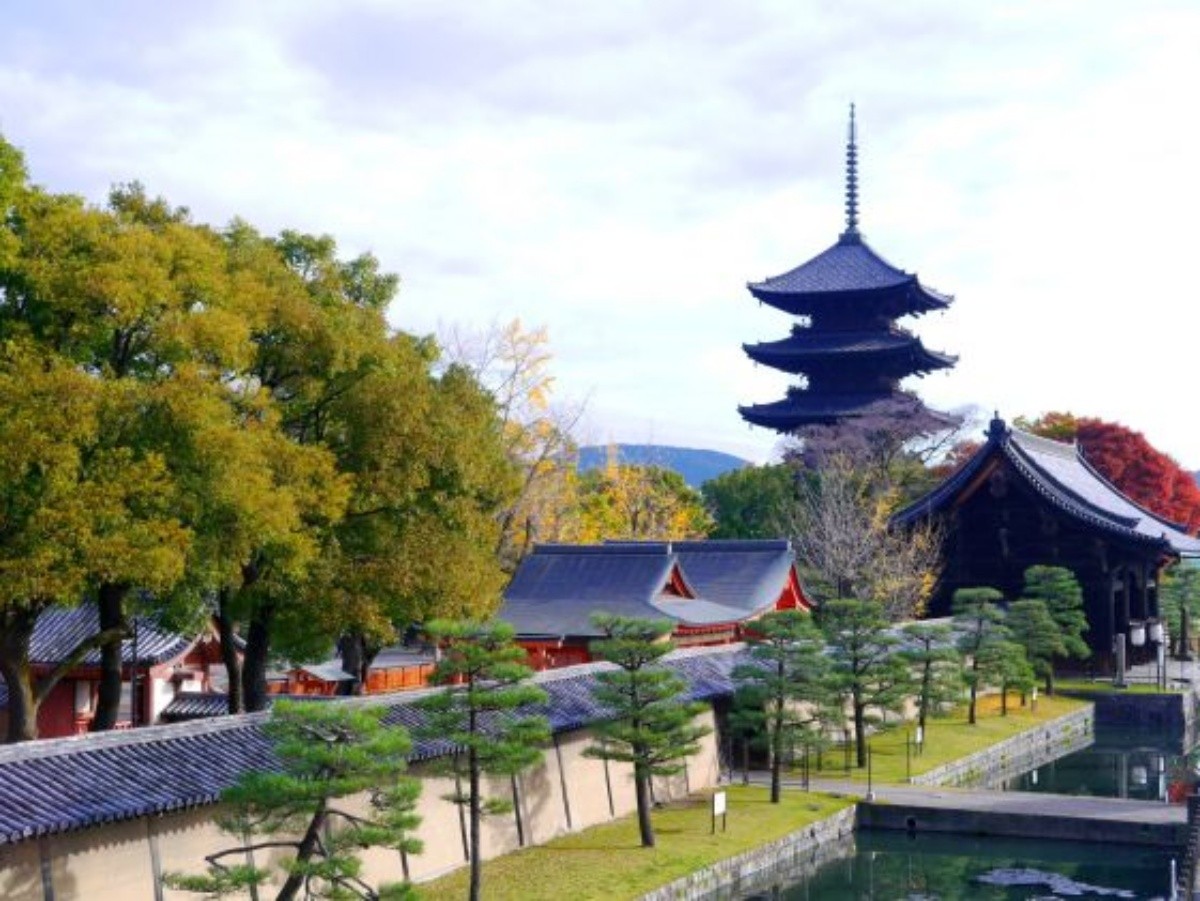
To-ji Temple (Kyou-Ou-Gokoku-ji Temple)
In the precinct, there are many living quarters of Kukai, including Miei-do, Nandaimon which was relocated from Sanjuusan-do, the main hall of Toji Temple, Kin-do, and several others. The original temple from the time of foundation is no longer there, but the line up from Nandaimon, to the main hall, the auditorium, and the dining hall represents the Three Jewels Buddhist Teaching. In the southeast corner of the precinct, the Five-storied Pagoda, a landmark of Kyoto, can be viewed from the south window of the Shinkansen that goes to and from Kyoto Station. The height is about 55 meters, and it is the tallest wooden structure in Japan, and it houses the stupa that Kukai brought back from China. At the time of special admission, the inside of the first floor will be open to the public.
Festivals of Kyoto Toji Temple
The Toji festival is held on the 21st of every month in anticipation for March 21st, the anniversary of the monk Kukai’s death. There are about 1,000 shops, and about 100,000 people visit every month. Stores selling a variety of wares including antiques, used clothes, and odds and ends all line up side by side during the festivities.
It is said that the festival originally marks the day when the gods established a relationship with this world, and when worshiping on this day, one will receive the merit of a good deed. Holding time is from 8:00 to 16:00 (around sunset) (depends on the weather and the shopkeeper). In addition, “Odds and Ends Town,” or Garakuta-shi, is held on the first Sunday of every month.
Nice Viewpoints of Toji Temple
Five-storied pagoda in the spring cherry blossom season. The combination of the Fuji Sakura and the Five-storied Pagoda is just the best view.
The Yaebeni-Shidare Sakura that has been named the Fuji Sakura is over 130 years old. It was transferred from Suzuka-shi, Mie Prefecture in 2006. In 2020, it will be illuminated at night from 18:30 to 21:30 (the end of the reception at 21:00) from the end of March to the beginning of April.
Kyoto To-ji Temple admission fee and visiting hours
To-ji Temple is a 15-minute walk southwest of Kyoto Station. Visit time is from 8:00 to 17:00 (16:30, reception is closed) for Kin-do and the Lecture Hall, 9:00 to 17:00 (16:30, reception is closed) for the Treasure Hall and Kanchi-in, the rest of the area is open from 5:00-17:00. About admission fees, visits such as Miei-do and the dining hall are free. The Kindo, Lecture Hall, Five-Storied Pagoda and Kanchi-in, which are paid to be paid public, are open throughout the year, but the first floor of the pagoda and the Treasure Hall are limited to special exhibitions and special visits. The schedule and pricing for 2019 is as follows:
Chart A
- New Year Special Visit includes the first floor of the Five-Storied Pagoda, 800 yen for the Kin-do and Lecture Hall, 500 yen for the Kanchi-in, and 1000 yen for the common ticket.
- Period: 2020 period to be determined
Chart B
- Kyoto Winter Travel Five-Storied Pagoda Special Visit includes the Five-Story Pagoda First Floor, Kin-do and Lecture Hall 800 yen, Kanchi-in 500 yen, common ticket 1000 yen.
- Period: 2020 period to be determined
Chart C
- Spring Special Opening and Autumn Special Opening are 500 yen each for Kin-do, Lecture Hall, Treasure Hall and Kanchi-in, and 1000 yen for common tickets.
- Autumn Special Exhibition Opening Period: September 20-October 25, 2019
- Spring Special Opening Period: 2020 to be determined
Chart D
- Evening Cherry Blossom Illuminations (18:30 to 21:30 (reception closes at 21:00)) is 500 yen.
- Holding period: late March 2020-early April
Chart E
- The Spring and Autumn Special Admission period (Five Story Pagoda first story) is currently undecided for the 2020 period, and admission costs 800 yen for the inner floor of the Five Story Pagoda; admission to Kin-do, Treasure Hall, and Kanchi-in are each 500 yen, entry to all areas is 1300 yen.
- Autumn Special Admission Period: October 26-December 8, 2019
- Spring Special Release: Five Story Pagoda First Stratum Special Opening Period: 2020 to be determined
Chart F
- Autumn leaves illumination Kin-do · Auditorium night special visit (from 18:30 to 21:30 (reception closes at 21:00) is 1,000 yen.
- Holding period: October 26-December 8, 2019
Chart G
- Main Hall ·Lecture Hall, Kanchi-in each 500 yen, common ticket 800 yen.
- Holding period: May 26-September 19, 2019, December 9-December 31
- Period: 2020 period to be determined
Spot information
Spot name: Toji Temple
- Address: 1 Kujocho, Minami-ku, Kyoto City
- Access: About 15 minutes on foot from JR Kyoto Station, about 10 minutes on foot from Kintetsu Toji station, about 1 minute on foot from Kyoto City Bus Stop Toji East Gate
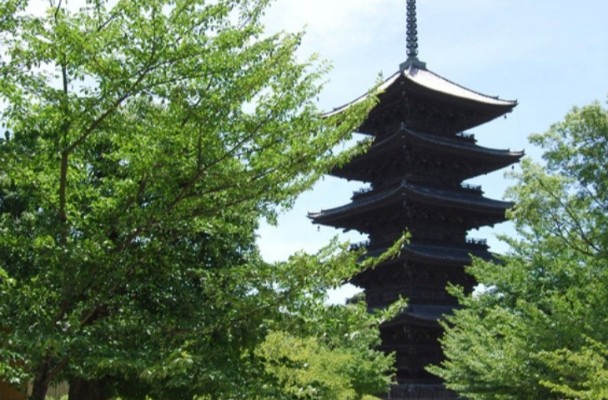

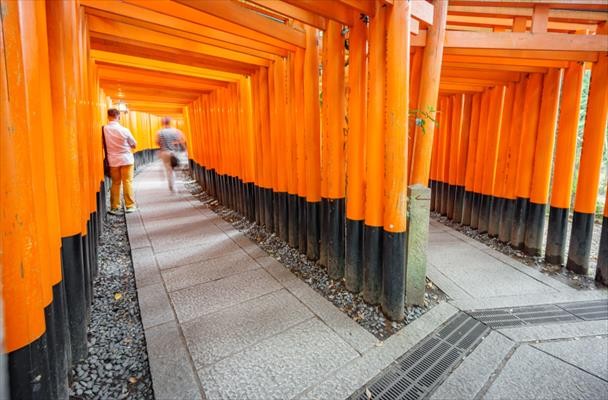
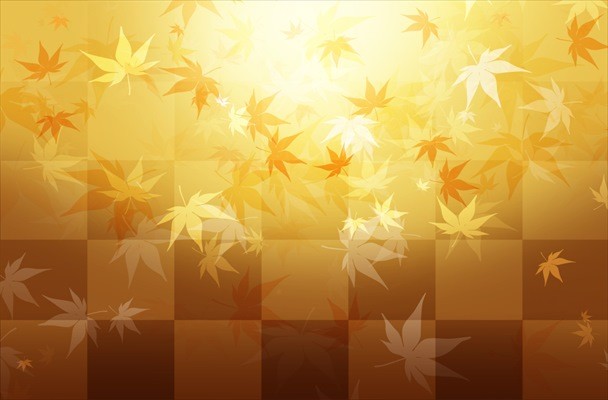
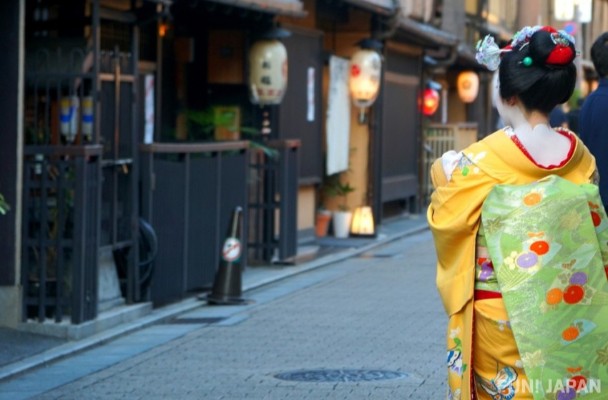
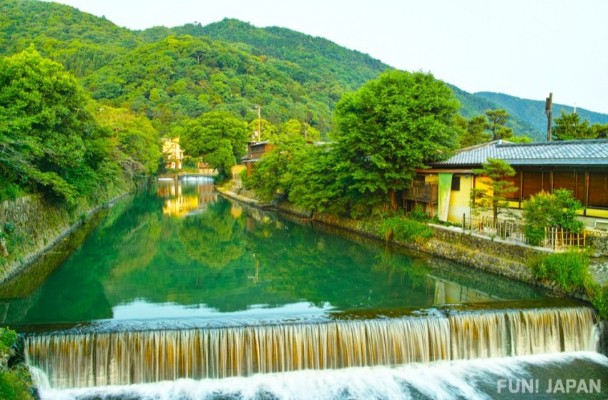
Comments